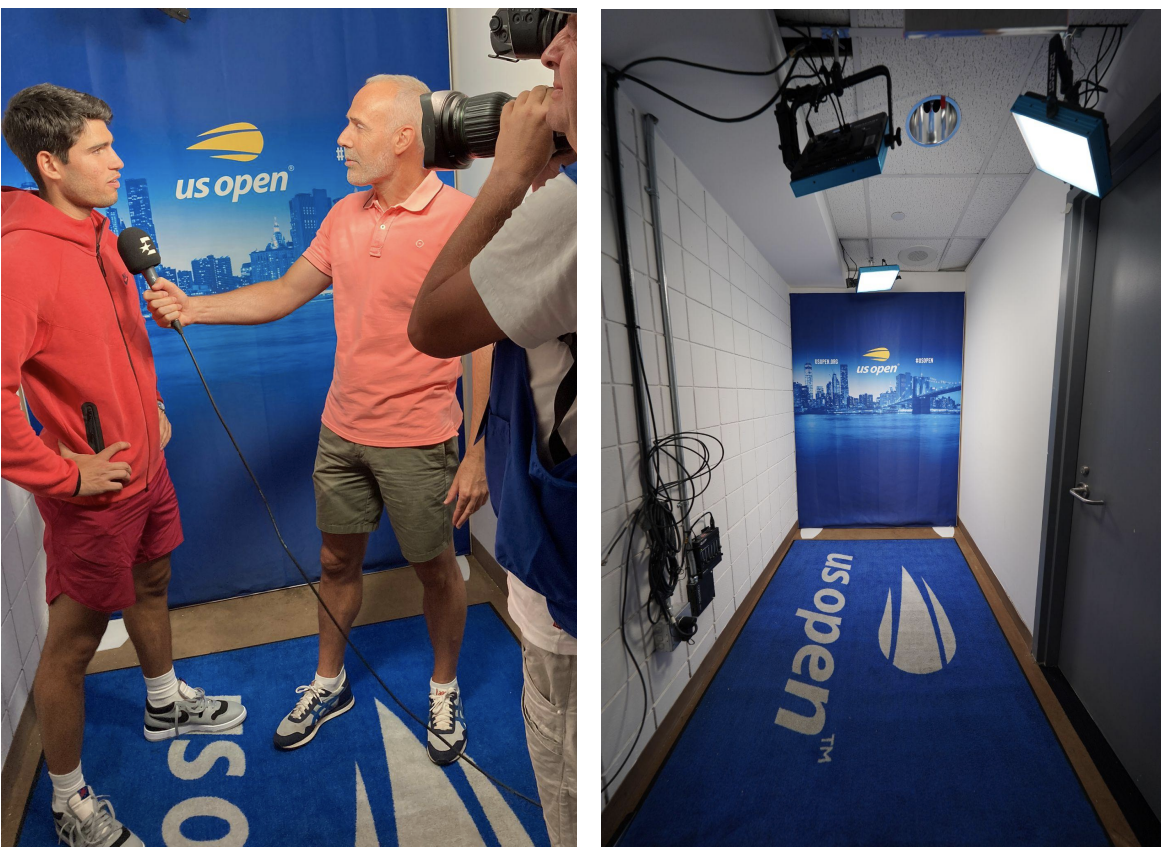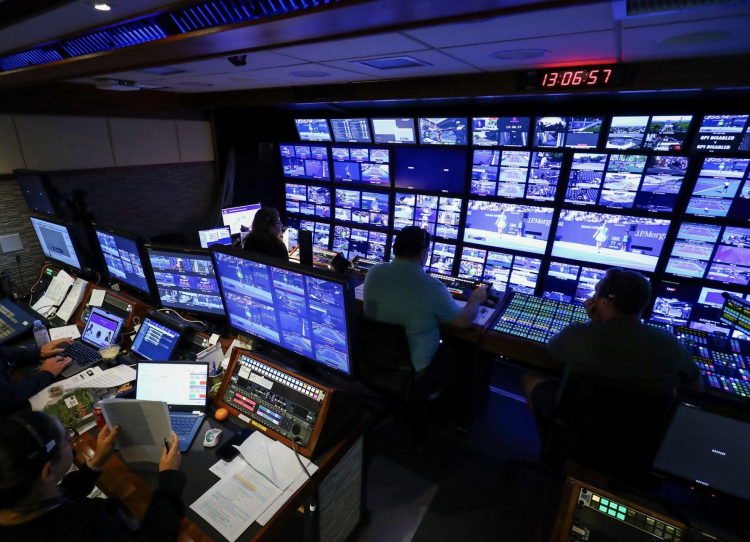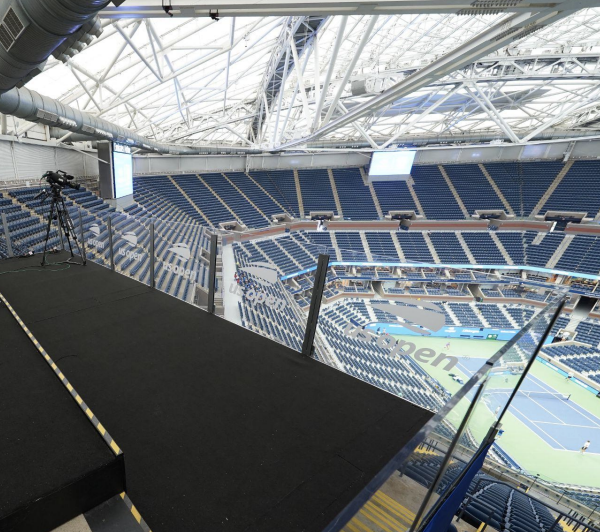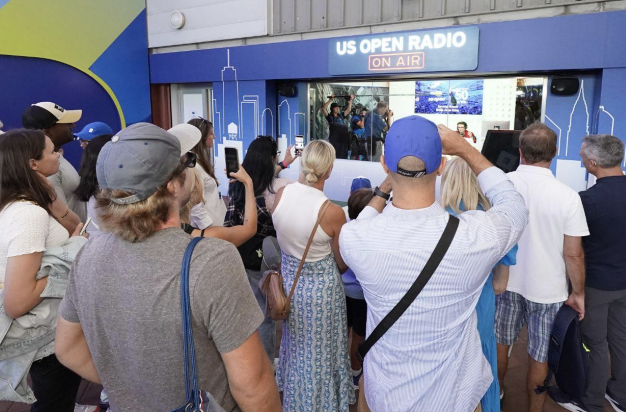Live From US Open 2023: USTA’s Patti Fallick Discusses Teamwork and Innovations
The team aims to lift the level of the production every year
Story Highlights
The 2023 US Open is in the books, and, for Patti Fallick, managing director, broadcast, USTA, and the USTA production team, this year’s efforts were about building relationships with new rightsholders, ensuring that established rightsholders’ needs were met, and making sure rightsholders were able to tell the story globally with the highest level of production.
“My team has been amazing,” says Fallick. “We are truly fortunate because they are a small team that is just outstanding. They understand what we’re trying to accomplish, and they work incredibly hard for this event. The US Open is now a full three-week event, with long days and nights. The team consists of Dayna Navata, senior manager, operations; Terry Brady, technical operations; Petro Mynch, lead tech manager; Jennie Silverstein, executive producer, world feed; and Nick Romano, [director, engineering,] NEP, who provides technical support along with NEP’s new IP digital truck to support our world feed.”
From a technical standpoint, there were no major changes from last year’s workflows. Arthur Ashe Stadium coverage was UHD for a second year, and all the other courts were produced in 1080p SDR. Those feeds were the core offering for a slew of rightsholders, including several new ones: Sky Sports UK, Super Tennis in Italy, Telefonica Movie Star Plus in Spain, Sports Deutschland.TV in Germany, and Migu in China.
“We want to make sure that our new partners feel as welcome here as our existing rightsholders,” says Fallick. “That takes a lot of effort, but we go above and beyond with things like having 20 ENG coordinators to make sure the rightsholders get the access they want. And we have people that speak Italian, French, Japanese, and Chinese so our global partners feel comfortable and get what they need. It’s a global village.”
What’s New
The biggest technical advance this year was the ability to add “Mic’ed Up” interviews with players warming up on the practice courts. The USTA worked with ESPN’s host-production team to deploy Riedel Bolero systems with Bluetooth earpieces that players could easily wear while moving around the courts.
“We saw it used on golf,” notes Fallick. “And then it was used at Wimbledon, so the players were already accustomed to it. Wimbledon had only a handful of players do it; we’ve had so many, we’ve lost count. Almost no players turned us down.”
Those interviews were part of a content strategy that is becoming commonplace at nearly every top-level sports event with multiple international rightsholders: feed us more as rightsholders look to meet viewers’ insatiable appetite for new content.
“There were no restrictions on anybody using it,” Fallick points out. “It also enhanced our features and our storytelling and [helped] fans understand what the players go through. My hope is that, at some point, we’ll be able to do interviews between sets or on changeovers. We’ve tried to bring the all-access feel to the event and get fans behind the scenes with our robocams in all the player areas and on the grounds. We want to show the audience everything that goes on, because there’s a lot more to the US Open than just the tennis matches.”
Helping in those efforts to bring fans closer to the off-court activities is that the younger generation of tennis players who blossomed this year are much more aware of how off-court activities can build a brand as much as on-court activities. “They are more adaptive to technology,” notes Fallick. “The Netflix Point Break series also played a part in helping players recognize what providing more access to them can do to help tell their stories and build their brands.”
All the additional content is available via the Digital Media Hub powered by Veritone and Thumbwar, along with match coverage, press conferences, features, and, because Veritone handles footage licensing, even the US Open archive.
“Veritone invested heavily in upgrading the Hub this year, and it’s phenomenal,” says Fallick. “The services that they and Thumbwar deliver to our partners are just outstanding. They delivered more than a petabyte of content, and global rightsholders had no problem anywhere in the world, downloading content seamlessly and in real time.”
IBM and WSC Sports also play a big role in meeting content needs, creating highlights distributed by the US Open digital team. Increasingly, says Fallick, it is the behind-the-scenes access that captures the attention of the USTA content-creation team and the imagination of rightsholders.
“It’s the robocams, the practice court streaming which NEP does for us,” says Fallick. “We even added a new features team this year to develop really high-end content that showcased the venue and the event. [Checkpoint Productions President] David Check, who used to be an executive producer at MLB and the NBA and did a lot of high-end documentaries, came in with his team to oversee our features productions. All the content produced was made available to our global partners along with specialty ENG shoots. All features were produced and edited onsite.”
Also helping with the in-depth coverage was the Go agency, whose team led by Managing Director Adrienne Gallagher produced the preview shows, nightly highlight shows, and a review show; and Boardwalk Productions, led by Director, Photography, Rob Newman, which has worked with the USTA for seven years and provided five ENG crews for three weeks of shooting. The footage shot by Boardwalk was used by the USTA’s features team and broadcasters.
“I couldn’t be prouder of all those efforts,” adds Fallick. “The fact that our partners use our content to support their US Open coverage, demonstrates that we’re delivering what they want. Everything we do content-wise is shared across all our platforms, and everybody shares in all the content: our digital platform, our app, and social media.”
The digital team, for example, this year had access to the 10 robotic cameras capturing behind-the-scenes moments and was able to clip off unique moments for social media. “The more people that can use the content the better it is for all of us,” she adds. “At the end of the day, we want to use all these resources to tell the story of the US Open.”
New Platforms (the Physical Kind)
One of the new ways USTA broadcasting helped rightsholders showcase the Open this year was a camera platform offering standup locations indoor at Arthur Ashe Stadium, the court where the highest-profile matches are held.
“The platform gave our global broadcasters an opportunity to be more of a part of the event inside Arthur Ashe,” says Fallick. “That was a real game-changer that Filmwerks bult for us. Filmwerks also renovated the commentary booths, in the upper level of Ashe Stadium, to provide a better environment for our commentators. It was very well-received by our broadcasters. We hope to see if we can extend this next year on the other side, with small studios.”
Also new this year was a flash interview position right off the player hallway, allowing rightsholders to do post-match interviews off the court.
“With on-court interviews, the players were not leaving the court, and that meant the fans were not leaving,” says Fallick. “We want to do everything we can to clear the court for the next match, but it also provides a great option for the players and our broadcast partners.”

A new flash interview studio gave rightsholders access to players post match in a comfortable environment,
The new flash studio is not visible to fans, but a new US Open radio studio very much is: it’s located next to the entrance to the American Express fan experience. A glass wall allows fans to see the hosts in action (they can be heard on Sirius XM and TuneIn), and Fallick says it has elevated the quality of the radio product.
“One of the first guests in the studio was Billie Jean King, and there was a large crowd watching outside and listening to the broadcast,” says Fallick. “Mowax Visual designed and built the beautiful studio; NEP and Live Sports Radio, the technical infrastructure. [Mowax owner/CEO] Molly Waxman and her team were awesome to work with and collaborate with. Jim Knapp and Live Sports Radio produce all the coverage.”
Looking to Next Year
Next year, Fallick says, the American Express radios, which have become a tradition for many fans at the Open, will be improved by making the radio coverage available on one channel and the TV coverage on another.
Each year, the US Open builds off the previous year’s efforts, and the 2024 tournament will be no exception.
“Throughout the entire tournament, we’re planning for next year,” notes Fallick, “and I, as well as others, already have an extensive list for next year because we’re always trying to improve and expand what we’re doing. I know we’re already looking forward to next year and starting that planning — after a well-deserved rest for the team.”
One effort this year that was in a test phase was virtual signage, visible to TV viewers in the form of a “50th Anniversary for Equal Pay” logo to the right of the Arthur Ashe court. “We did that with SMT and their VFAB system,” explains Fallick. “It worked out quite well. Many people, even in our own organization, didn’t realize that it was not painted on the court.”
The US Open every year is a massive partnership between the USTA; the rightsholders; ESPN, which handles production of the host feed; and technology providers NEP, Gravity Media, and others.
“It’s truly the partnership with ESPN, [ESPN VP, Production,] Jamie Reynolds, and his entire team that drives all this,” explains Fallick. “It’s that relationship and everybody working together for the greater good of showcasing the US Open to the world. Without that partnership and the mutual respect, an event of this size and scope doesn’t happen at the level it does.”



